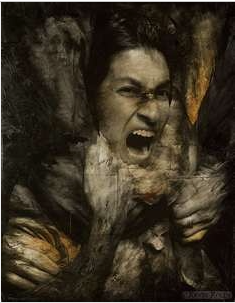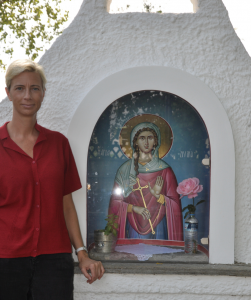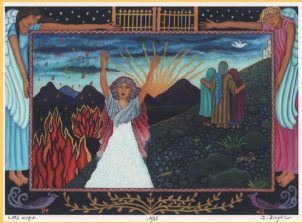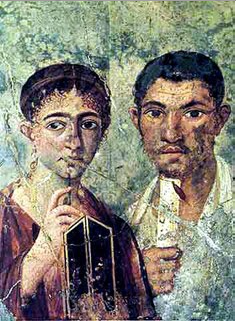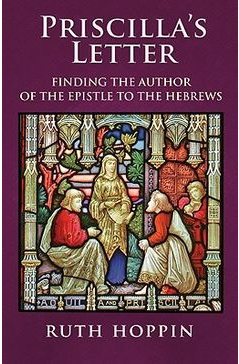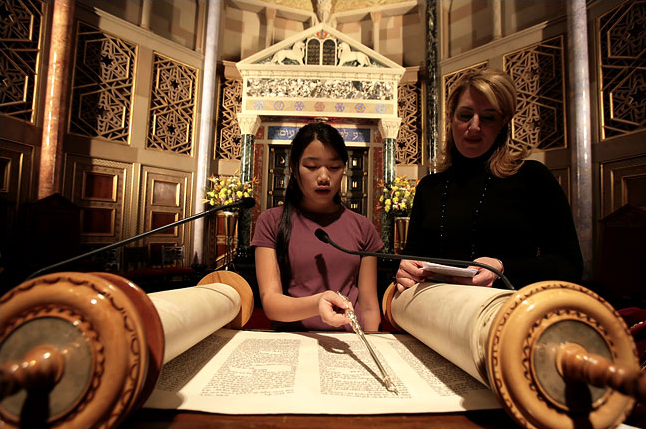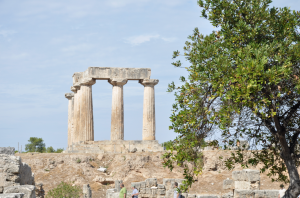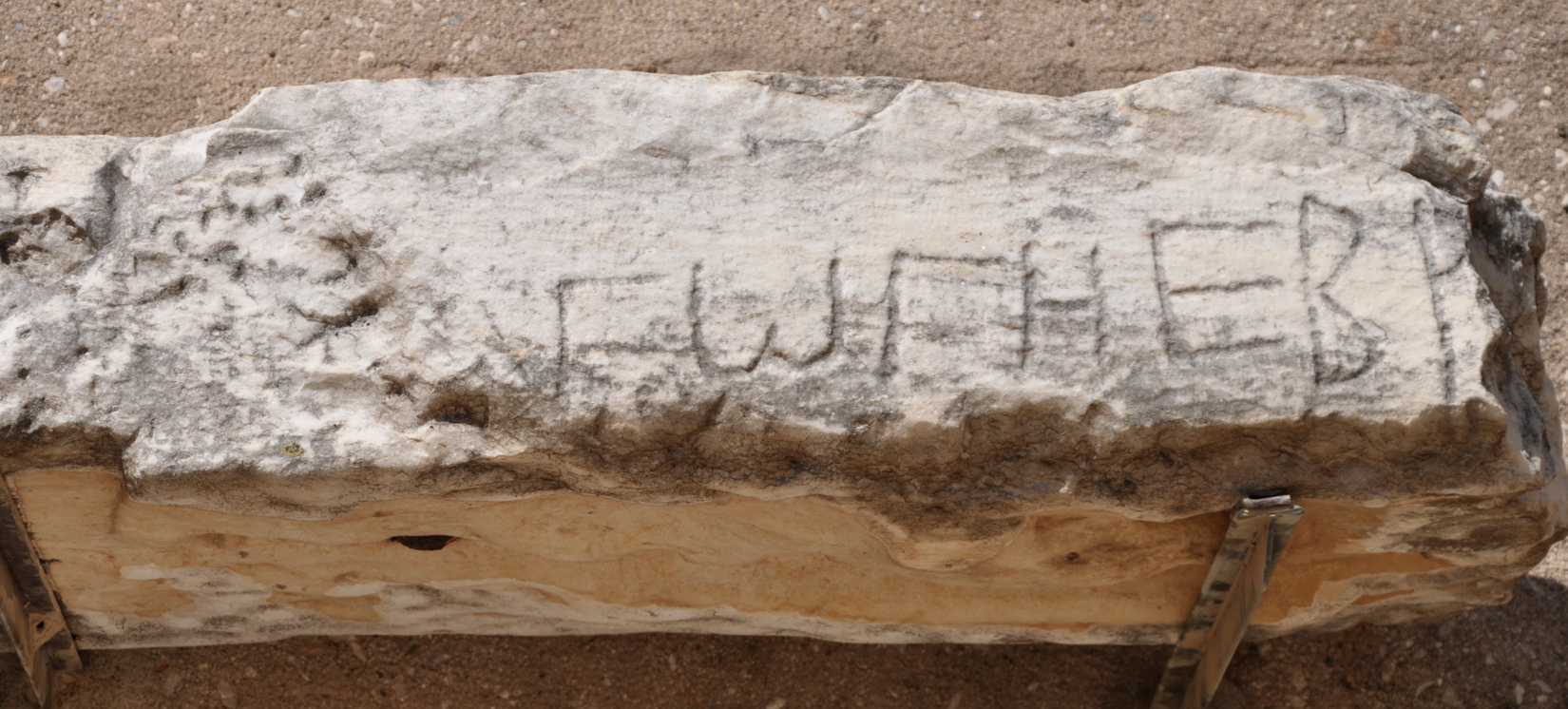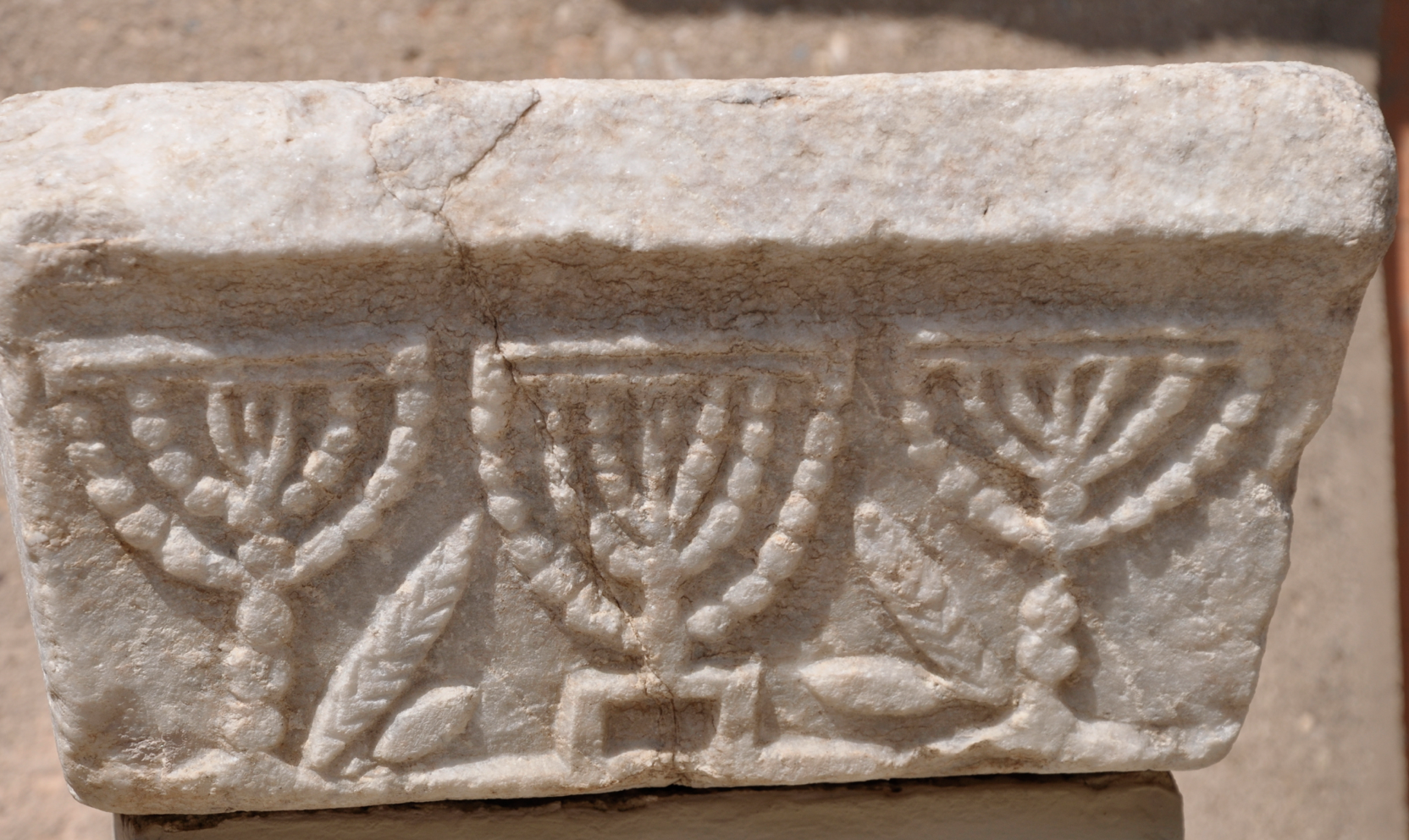In my estimation, the most shocking story in the Hebrew Bible is Judges 19. A Levite priest, in an act of protest, cut up his concubine and sent the pieces to the 12 tribes of Israel. Incensed, the tribe goes on a killing and raping rampage. Most feminist scholars conclude that biblical ideology inherent in Judges 19-21 condones violence against women in the service of higher (male) agendas. Traditional commentators generally see the story as propaganda for the establishment of the monarchy or a critique of Saul’s kingship.
I, on the other hand, tend to see abusive stories about women as critiques of culture and theology. After years of research, I’ve concluded that most of the biblical narratives blossom with irony, parody and satire all in the service of showing the emperor has no clothes, that the powers that be have lost their moral compass. Read as a protest against abuse, even the most grisly of tales demonstrate that the mistreatment of women in ancient Israel was as unacceptable as it is now. The basic lawlessness of the land was established early in the story. The phrases, “in those days there was not king in Israel” and “every man did what was right in his own eyes,” tell us as readers that the narrator has passed judgment on the story and found the deeds described despicable. This is not a story meant to condone violence but to protest it.
Anonymity
One striking feature of the Judges 19-21 narrative is that virtually everyone is nameless. In contemporary terms, this would be like reading a novel where none of the characters are named. It would grab the reader and listeners’ attention. Hudson goes so far as to say that “without a name the person immediately enters the realm of objectification and inauthentic living” (p.56). This is why we place so much emphasis on remembering people’s names. By naming another we express intimacy and a connectedness.
“Not knowing the name and not being known by name dramatically influences behavior and relations. The assumption is that an individual with a name that is known would never do the same actions that an anonymous person would commit, or a person would relate differently to an individual who is named as opposed to an anonymous victim. For example, we should all be too familiar with the Nazis’ gruesome practice of replacing the names of victims with numbers in the concentration camps—number are more easily disposed of than the named…Once again, the rape and disinheriting of the one concubine leads to the rape and disinheriting of the women and children of Benjamin (20.37-48) and the ‘women of Shiloh’ (21.19-24). By allowing the characters to remain anonymous, it is as if the narrator implicates not just one Levite, one city or one host, but the entire structure of that godless society” (Hudson, p. 61).
By leaving the characters of the story nameless, the narrator symbolizes the increasing dehumanization that culminates in radical anarchy.
Some feminist critiques have named her in an attempt to stress her independent personhood. “The result would be the same as naming the ‘unknown solder’. As soon as he is named he loses his symbolization of all the nameless men and women whose sacrifice will never be known by name” (Hudson, p.63). Naming reverses the subversiveness of the message.
Social Status of the Levite and his Concubine
There is debate in the scholarly community regarding the exact legal status of a concubine so I will use the term “secondary wife” interchangeable with “concubine.” We do know that a concubine had a lower status than a primary wife. “When the Levite takes a wife-pilegesh, a second-class wife, the power dissymmetry between husband and wife is even more pronounced than in the average patriarchal household, and the relationship of husband to wife is placed in high relief” (Frymer-Kensky, p.119). Trible even describes a concubine as being “virtually a slave” (p.66). Clearly, the Levite’s concubine is relatively powerless compared to her husband.
The Levite is at once of a high social rank and a low one. As a priest he was considered a holy man. On the other hand, at the time of the judges in Israelite history, the Levites were landless, itinerant religious experts (Frymer-Kensky, p.119). They relied on donations from the community they resided in. The Levite lived in a tent (Judges 19:9) in the remote hills of Efraim compared to the house in the city of Bethlehem from which his concubine came from. Despite her lowly status as a concubine, she must have been disappointed in the plunge in her social status by marrying the Levite. “The father’s attitude, coupled with the Levite’s unwillingness to take her as a full-fledged wife, must have been a blow to the girl’s self-esteem…She is treated like chattel, which is reflected grammatically as well: she is the object and the Levite the subject: he ‘takes’ her” (Aschkenasy, p.66). From the beginning, our expectations for this marriage are not high.
She Runs Away – What does “to play the harlot mean?”
“Once his concubine deserted [vatizneh] him, leaving him for her father’s house in Bethlehem in Judah; and she stayed there a full four months. And her husband rose and went after her, to speak to her heart, to bring her back…And she brought him into the house of her father” (Judges 19:2-3).
A woman acting on her own to leave her husband’s home was extremely rare in the Ancient Near East. According to most traditional commentators the concubine brought her eventual death upon herself by leaving the safety of her husband’s tent. The woman is critiqued because, like “Dinah, her initial action, leaving the patriarchal home, started the trouble. Just as Dinah was considered loose because she ‘went out,’ so the concubine is considered a ‘harlot’ because she left her husband” (Aschkenasy, p.76). Some biblical versions translate vatizneh as “she played the whore” to emphasize the point. Whether or not the concubine participated in adulterous activity, the “Levite’s wife’s behavior falls into the category of ‘sexual misconduct’ (i.e. socially inappropriate) because she has left him” (Mullner, p.138). Culturally, a woman who leaves her husband is by definition a harlot.
However, the narrative does not support the translation “she played the whore.” First, “the father never scolds his daughter for making such a daring, unusual move, never urges her to return to her lawful master” (Aschkenasy, p.67). If she indeed was a harlot, her father would not have opened her doors to her because of the shame her presence would bring to the family. Secondly, why would the husband expend the time and energy to speak to her heart in an effort to bring her back if the concubine had broken her marriage vows?
“The Levite’s action four months later, his decision to ‘speak to her heart’ implies a sense of guilt. He understands that he must appease her, to ask forgiveness, while she is the wronged party that has to be dealt with kindly and tenderly and be gently persuaded to return…Surely had he felt that he was the wronged party, that he had a serious complaint against his concubine, the Levite would have talked to the father harshly” (Aschkenasy, p.67).
Third, under the Levitical and Deuteronomical laws she would have to be put to death (Lev. 20:10; Deut. 22:22). All in all, the characters do not treat her as if she had been unfaithful to her husband.
Many commentators prefer the Greek translation of vatizneh to the Hebrew version since the verb can sometimes be translated as “quarreled” or “was angry.” If we use a Hebrew idiom we would say, “her heart was vexed.” The way that the Levite treated his concubine later in the story leads me to think that she was an abused wife, not an adulterous woman. “His subsequent behavior makes clear that he was less than sensitive to her needs” (Bledstein, p.51). Given all of these points, I agree with those who suggest that the primary meaning of the verb is “to leave” or to “turn away” (Aschkenasy, p.165, n.28).
If she was a battered wife, then it must have been a traumatic event to see her tormentor approaching her father’s home. Since her father joyfully welcomed the Levite, the daughter could do nothing to prevent his entrance. The Levite “is capable of emotional abuse toward his concubine, maintaining long, menacing silences, and treating her like a non-person. He is not averse to physical roughness and cruelty; soon he will forcefully throw her outdoors into danger, and later he will coldly and methodically dismember her body” (Aschkenasy, p.70).
Making Glad the Heart
“And it came to pass, on the fourth day [of feasting], that they rose early in the morning, and he rose up to depart, and the father said to his son-in-law, ‘Strengthen your heart with a morsel of bread, and afterward you shall go your way. And they sat and ate both of them together, and drank, and the father of the young woman said to the man, ‘Be will, I pray thee, and lodge all night, and let they heart be glad.’” (Judges 19:5).
After three days and nights of feasting by themselves, the concubine’s father implored his son-in-law to stay longer, using the phrase “strengthen your heart.” The purpose of the Levite’s visit in the first place was to speak to his concubine’s heart. There has been no mention that he has spoken tender words or reconciled with her. Perhaps the father meant to subtly remind his son-in-law of his original intentions by mentioning the heart several times. Even the next day, the father tried once more to jog the Levite’s memory, to make peace with his daughter before he left. “And he rose to go early on the fifth morning, and the father of the young woman said, ‘Please strengthen your heart.’ And they tarried until afternoon” (Judges 19:8). If only the Levite had listened to the father’s entreaty and spoken kindly to his concubine, the tragedy that follows might have been averted. Perhaps he would have stayed an extra day and left the father’s home earlier in the day so that he could have made it safely home in one day.
Instead, the Levite left the safety of his father-in-law’s home late in the day. It was an irrational decision to take to the road close to sundown. “One must conclude that the Levite’s motivation has a streak of sadism in it. Scaring his concubine, as well as making light of her father’s foreboding, must give him pleasure” (Aschkenasy, p.71). The itinerant priest took his concubine without reconciling with her despite her father’s impotent attempts to bring the two together peacefully. Caught between her husband and her father, the woman had no more cards to play. According to the law, she had to leave with her husband because she did not have the right to divorce (Frymer-Kensky, p.120). The “Levite now knows that she is completely at his mercy. The young woman must feel dispirited, beaten, hopeless. She has lost her struggle for a measure of decent treatment in her master’s house. She knows that the only option once open to her, fleeing to her father’s house, is no longer possible” (Aschkenasy, p.71).
Finally the Levite finds an old man willing to host them in Gibeah in the Benjaminite territory. Once again the men settle in to “make glad their hearts.” Clearly the Levite has no intention of reconciling with his wife but only in bonding with his male hosts. He is only interested in his own well-being, not the heart of his concubine.
A Folly in Israel
“As they were making their hearts merry, behold, the men of the city, worthless fellows, surrounded the house, beating on the door. And they said to the old man, the master of the house, ‘Bring out the man who came into your house, that we may know him.’ The owner of the house went outside and said to them, ‘No my friends, don’t be so vile. Since this man is my guest, don’t do this outrageous thing [nebalah] ” (Judges 19:22).
Just when the Levite was settling into another night of revelry, he’s suddenly in harm’s way as the crowd outside demands to abuse his body. Stone argues that there is no ambiguity in the men of Gibeah’s intentions. The worthless fellows want the Levite so that they may “know” him. Then we quickly learn that the men “knew” the concubine, clearly a reference to rape. “If the eventual treatment of the woman is taken into account, then it appears that the men of Gibeah demand sexual access to the Levite, just as the men of Sodom demanded sexual access to Lot’s visitors in Genesis 19” (Stone, Sex, Honor and Power, p.75). Culturally, being penetrated by another man was the most emasculating act possible. It is a “folly,” a nebalah, the worst offense possible. The same phrase is used when Shechem slept with Dinah without her father’s approval. As her brother Amnon was about to rape her, Tamar pleaded for him not to attack her. “No, my brother, do not rape me, for such is not done in Israel, do not do this nebalah”. Roth suggests that nebalah is a sacrilege and a “breach of a sacred covenant relationship” (Roth, p.406). Nebalah appears to be closely related to rape and the outrage against it indicates that Israel thought of itself as a nation that did not perform this crime.
However, the old man’s speech does not satisfy the mob. In the crowd’s eyes, the old man disgraced the people of Gibeah by providing hospitality when they didn’t. “This act of implicit criticism of local customs demands revenge, in the form of dragging the guest from out [of] the protection of his host, and ‘roughing him up,’ thus proving both his and his host’s masculine incompetence” (Aschkenasy, p.72). Since homosexual rape was a more serious offense than heterosexual rape, the old man had to do anything to maintain his commitment to hospitality and thereby save face. So he sweetens the deal: “Look, here is my virgin daughter, and his concubine. Let me bring them out to you. Ravish them, and do to them what is good in your eyes” (Judges 19:24). This of course recalls the story of the wicked men of Sodom demanding that Lot give them his two guests. Lot offers his two daughters instead. The language used in each episode is almost identical to make sure that we don’t miss the point that both stories are connected. “These two stories show that rules of hospitality in Israel protect only males.” (Trible, p.75) Considering how Lot’s wives eventually faired with their father, neither either tale has a happy ending. Both end in the destruction of cities and the great loss of life.
By connecting both stories the narrator intended to convey that the threat and abuse of innocent and helpless women only leads to national disaster. “The culture may well prefer to sacrifice women instead of men in extreme situations of this kind, but that does not mean that the narrator allows this perspective to pass uncriticized” (Lapsley, p.46).
Thrusting the Concubine out the Door
“But the men would not listen to him, so the man seized his concubine and pushed her out to them. They raped her and abused her all night long until morning: and they let her go when dawn broke” (Judges 19:25).
The mob rejected the old man’s offer to ravish the two women. However, suddenly the concubine was thrown out the door. In the Hebrew the implication is that she strongly resisted. Also, it is unclear whether the old man or the Levite actually pushed the concubine out the door. Legally, the old man did not have the right to thrust the Levite’s concubine out the door. As host he was required to protect the Levite as well as his property which included the concubine. However, the Levite himself had the right to give his concubine away, whether directly or by giving her to old man to do what was right in his eyes.
The crowd of men had no difficulty taking advantage of the single woman. Why did the men of Gibeah reject the first offer of both the host’s virgin daughter and the concubine? Then without explanation they accepted the gift of one of the women, the concubine? Because the men were interested in punishing the Levite alone, not the old man as well. “A sexual misconduct committed against a woman is, therefore, an attack upon the man under whose authority she falls…For this reason the offer of the daughter and the concubine is rebuffed, while the offer of the concubine alone is successful. The men of Gibeah are not interested in attacking the host; rather, they want his guest” (Stone, Sex, Honor and Power, p.81). By saving his male guest from rape, the old man has saved face and in his mind won the bargain.
Then we learn that the Levite rose up the next morning, therefore we know he went to bed while his concubine was being viciously raped somewhere in Gibeah. “That the husband might have slept through the attack astonishes us and adds to the horror. Perhaps he was suffering from a hangover after the 5 days of carousing” (E.T.A. Davidson, p. 51). By this little detail we are meant to be appalled by the man’s selfishness and ruthlessness.
Back at the Threshold
“When her husband rose in the morning, he opened the doors of the house and sent out to continue his journey; and there was the woman, his concubine, lying at the entrance of the house, with her hands on the threshold. ‘Get up,’ he said to her, ‘let us go.’ But there was no reply” (Judges 19:27-8).
The Levite showed no curiosity about her fate. Before the Levite even saw her, he was determined to go without caring what happened to her. He acted like the whole event didn’t affect him at all. He practically stepped over her body on the way out the door. He addressed her like a dog sleeping at the door—“get up and let’s go.” The Levite’s “speech sounds more heartless and cutting in Hebrew because of its brevity, only two words. The man does not stop to look at her injuries, to see whether she needs help, indeed to verify whether she is alive or dead” (Aschkenasy, p.74). These are also the first words the Levite said to his concubine in the story, a far cry from his original intent to speak to his wife’s heart. He doesn’t expect an answer from her because she has not been given a voice throughout the whole episode. He’s used to her not having a voice.
The text states that the Levite “seized” the woman from the threshold, the same word used to describe what he or the old man did when one of them threw her out the door to the mob. The narrator invites us to compare the two events. This same technique is used to connect the “to send out” to describe the actions of the mob and the Levite as he distributes the severed pieces of her body. The “narrative subtly identifies the Levite with the violent mob, implying that their actions belong in the same category” (Lapsley, p.49). We are to contemplate the depravity of the Levite’s action.
In the Hebrew text it is not clear whether the concubine is dead or not as she lies at the threshold. Uncomfortable with this unknown, the Greek text tells us that she is already dead. The Hebrew leaves open the possibility that the Levite murdered her later when he cut her up into 12 pieces. This seems all the more likely given that the Levite talks to her, clearly expecting her to be alive. Yet even if he thought she was alive, he treated her like an object, throwing her over his donkey like rug.
Dismemberment
“When he came home, he picked up the knife, and took hold of his concubine and divided her according to her bones into twelve parts. He sent them throughout the territory of Israel” (Judges 19:29).
In 1 Samuel 11:7 Saul cut up a yoke ox and sent it throughout Israel with the threat that he would do the same to the cattle of those who did not join him in battle. In the story of the Levite’s concubine it is a human being who is cut up like an ox. In fact the language is the very technical terminology of butchery. The Levite took the knife he used for ritual purposes to cut up her body. “The man raises a slaughtering knife, the ma’akelet, the same type of knife that Abraham raised over Isaac’s head” (Frymer-Kensky, p.127). As a priest, he would have been quite competent in severing meat from bone for ritual sacrifices. The dismemberment of the concubine is a parody of sacred ritual practice. “Is she alive? Then he slaughters her, but not for Yahweh. Is she dead? Then he, a Levite, should not touch her. Not only does the Levite, a priest, handle the defiling body; but also instead of offering the pieces to Yahweh, he sends them to his brothers” (Bal, Death & Dissymmetry, pp. 98-99). She becomes a meat offering to the tribes, an anti-sacrifice.
The dismemberment erased all evidence of her humanity, deprived her even of the dignity of burial. “It is as if the man is trying, in overdoing the violence already done to her, retrospectively to affirm his mastery, as against the mastery of the rapists, over her. Even at this poignant moment, moment of [her] dismemberment, the men compete” (Bal, Death & Dissymmetry, p. 126). The Levite also comes across as publicy-hungry. By sending out her parts throughout the land, he wants to get the most out of the wrong he perceives has been done to him.
The concubine’s severed body then becomes the excuse for a civil war between the twelve tribes of Israel. Ironically the tribe of Benjamin is almost cut off from existence. Instead of the redressing of crimes, it is followed up by more crime including the rape of many more women. The dismemberment symbolizes the disintegration of society; violence against woman is the catalyst for this disintegration.
Conclusion
“And everyone who saw it cried out, ‘Never has such a thing happened or been seen from the day the Israelites came out of the land of Egypt to this day! Set your heart upon it, take counsel, and speak’” (Judges 19:30).
One last time the narrator draws our attention to the heart. We are enjoined to not be heartless like the Levite and the mob. Almost every detail of the narrative is constructed to make us care about the woman and to find the Levite utterly contemptible. Human nature hasn’t changed dramatically over time. We are as capable of the same mistakes now as then. Judges 19 shows us that we are meant to be kind to each other, that even the act of speaking to each other’s hearts can prevent social chaos. Peace in society can begin with the tender words between a husband and a wife. It’s the littlest details of our behavior that matter. Now set your heart upon it, take counsel and decide to practice kindness in all things.
For Further Reading
Ackerman, Susan – Warrior, Dancer, Seductress, Queen: Women in Judges and Biblical Israel (New York: Doubleday, 1998)
Amit, Yairah – “The Concubine in the Gibeah Episode as Hidden Polemic against Saul’s Kingdom and its Supporters (Judges 19-21)” Beit Mikra 37 (1991-92)
Amit, Yairah – “Literature in the Service of Politics: Studies in Judges 19-21,” in Politics and Theopolitics in the Bible and Postbiblical Literature, Henning Graf Reventlow, Yair Hoffman, and Benjamin Uffenheimer, eds. Journal for the Study of the Old Testament Supplement Series 171. (Sheffield: Sheffield Academic Press, 1994) pp. 28-40.
Aschkenasy, Nehama – Women at the Window: Biblical Tales of Oppression and Escape (Michigan: Wayne State University Press, 1998)
Bach, Alice – “Rereading the Body Politic: Women and Violence in Judges 21,” in A. Brenner, ed. A Feminist Companion to Judges, 2nd Series (Feminist Companion to the Hebrew Bible; Sheffield: Sheffield Academic Press, 1999b), 143-59.
Bal, Mieke – “A Body of Writing: Judges 19,” in A Feminist Companion to Judges (First Series), Athalya Brenner, ed. Feminist Companion to the Bible 4. (Sheffield, Eng.: JSOT Press, 1993) 208 – 230.
Bal, Mieke – “Dealing/With/Women: Daughters in the Book of Judges” in Women in the Hebrew Bible: A Reader, Alice Bach, ed. (New York: Routledge, 1999).
Bal, Mieke – Death and Dissymmetry: The Politics of Coherence in the Book of Judges (Chicago: University of Chicago Press, 1988)
Bal, Mieke – “The Rape of Narrative and the Narrative of Rape: Speech Acts and Body Language in Judges” in Literature and the Body: Essays on Populations and Persons, E. Scarry, ed. (Baltimore: Johns Hopkins University Press, 1988).
Beal, Timothy K. and David M. Gunn, eds. – Reading Bibles, Writing Bodies: Identity and the Book (London: Routledge, 1997)
Bellis, Alice Ogden – Helpmates, Harlots, and Heroes: Women’s Stories in the Hebrew Bible (Westminster: John Knox Press, 1994)
Bird, Phyllis A. – “‘To Play the Harlot’: An Inquiry into an Old Testament Metaphor'” in Gender and Difference, Peggy L. Day, ed. (Minneapolis: Fortress Press, 1989) 75-94.
Bledstein, Adrien Janis – “Is Judges a Woman’s Satire of Men Who Play God?” Judges, A Feminist Companion to the Bible, A. Brenner, ed. (First Series) 4:34-54.
Block, Daniel I. – “Echo Narrative Technique in Hebrew Literature: A Study in Judges 19,” Westminster Theological Journal 52 (1990) 325-41.
Bohmbach, K.G. – “Conventions/Contraventions: The Meaning of Public and Private for the Judges 19 Concubine,” Journal for the Study of the Old Testament 83 (1999), 83-98.
Brenner, Athalya – “Ideological Criticism: Judges 17-21 and the Dismembered Body” in Judges and Method: New Approaches in Biblical Studies, Gale Yee, ed. (Fortress Press, 1995)
Coetzee, J.H. – “The ‘Outcry’ of the Dissected Woman in Judges 19-21: Embodiment of a Society,” Old Testament Essays 15, no.1 (2002): 52-63.
Currie, S.D. – “Biblical Studies for a Seminar on Sexuality and the Human Community, I: Judges 19-21,” Austin Seminary Bulletin 87 (1971), 13-20
Davidson, E.T.A. – Intricacy, Design, and Cunning in the Book of Judges (Xlibris, 2008)
Davidson, Richard M. – Flame of Yahweh: Sexuality in the Old Testament (Peabody, Mass.: Hendrickson, 2007)
Exum, J. Cheryl – “The Centre Cannot Hold: Thematic and Texual Instabilities in Judges” Catholic Bible Quarterly 52 (1990) 410-431.
Exum, J. Cheryl – “Feminist Criticism: Whose Interests are Being Served?” in Judges and Method: New Approaches in Biblical Studies. Gale A. Yee, ed. (Minneapolis: Fortress, 1995) 65-90.
Exum, J. Cheryl – Fragmented Women: Feminist (Sub)versions of Biblical Narratives. Journal for the Study of the Old Testament: Supplement Series 163 (Sheffield: Sheffield Academic Press, 1993).
Fewell, Danna Nolan and David M. Gunn – Gender, Power, and Promise: The Subject of the Bible’s First Story (Nashville: Abingdon Press, 1993)
Frymer-Kensky, Tikva S. – Reading the Women of the Bible: A New Interpretation of their Stories (New York: Schoken Books, 2002)
Fuchs, Esther – Fragmented Women: Feminist (Sub)versions of Biblical Narratives. JSOT Supplement 163 (Continuum, 1993)
Gravette, Sandra L. – “Reading ‘Rape’ in the Hebrew Bible: A Consideration of Language.” Journal for the Study of the Old Testament 28 (2004): 279-99.
Houten, Christina van – “The Rape of the Concubine,” Perspectives 12, no. 8 (October 1997) 12-14.
Hudson, D.M. – “Living in a Land of Epithets: Anonymity in Judges 19-21,” Journal for the Study of the Old Testament 62 (1994), 49-66.
Jones-Warsaw, K. – “Toward a Womanist Hermeneutic: A Reading of Judges 19-21,” in A Feminist Companion to Judges (First Series), Athalya Brenner, ed. Feminist Companion to the Bible 4. (Sheffield, Eng.: JSOT Press, 1993)
Keefe, Alice A. – “Rapes of Women/Wars of Men” Semeia 61 (1993) 79-97.
Lapsley, Jacqueline E. – Whispering the Word: Hearing Women’s Stories in the Old Testament (Louisville: Westminster John Knox, 2005)
Liverani, Mario – “Messages, Women, and Hospitality: Inter-tribal Communication in Judges 19-21” in Myth and Politics in Ancient Near Eastern Historiography, Zainab Bahrani and Marc Van de Mieroop, eds. (Cornell University Press, 2007)
Matthews, Victor H. – “Hospitality and Hostility in Genesis 19 and Judges 19” Biblical Theology Bulletin 22 (1992) 3-12.
Mullner, Ilse – “Lethal Differences: Sexual Violence as Violence Against Others in Judges 19,” in A Feminist Companion to Judges (Second Series), Athalya Brenner, ed. Feminist Companion to the Bible 4. (Sheffield, Eng.: JSOT Press, 1999), 126-42.
Niditch, Susan – “The ‘Sodomite’ Theme in Judges 19 – 20: Family, Community, and Social Disintegration,” Catholic Biblical Quarterly 44 (1982): 365-78.
Patton, Corrine L. – “From Heroic Individual to Nameless Victim: Women in the Social World of the Judges” in Biblical and Humane. A Festschrift for John F. Priest. Linda Bennett Elder, ed., Scholars Press Homage Series. (Scholars Press, 1996)
Penchansky, D. – “Staying the Night: Intertextuality in Genesis and Judges,” in D.N. Fewell (ed.), Reading between Texts: Intertextuality and the Hebrew Bible. (Louisville: Westminster John Knox, 1992) 77-88.
Percy, W. – “Naming and Being,” The Personalist 41 (1960) 148-58.
Rashkow, Ilona N. – Taboo or Not Taboo: Sexuality & Family in the Hebrew Bible (Minneapolis: Fortress, 2000).
Reinhartz, Adele – “Why Ask My Name?” Anonymity & Identity in Biblical Narrative (New York: Oxford Univ. Press, 1998)
Reis, Pamela Tamarkin – “The Levite’s Concubine: New Light on a Dark Story,” Journal for the Study of the Old Testament 20 (2006), 125-46.
Roth, W.M.W. – “NBL [nabalah],” Vetus Testamentum 10 (1960) 394-409.
Satterthwaite, Philip – “‘No King in Israel’: Narrative Criticism and Judges 17-21” Tyndale Bulletin 44 (1993) 75-88; www.tyndalehouse.com/tynbul/library/TynBull_1993_44_1_04_Satterthwaite_NoKing_Judg17f.pdf
Sawyer, Deborah F. – God, Gender and the Bible. Biblical Limits (London: Routledge, 2002)
Schneid-Ofseyer, Miriam – “The Concubine of Gibeah, Judges 19-21,” Jewish Bible Quarterly 18 (1989) 111-13.
Scholz, Susanne – Sacred Witness: Rape in the Hebrew Bible (London/New York: T&T International, 2007)
Stone, Ken – “Gender and Homosexuality in Judges 19: Subject-Honor, Object-Shame?” Journal for the Study of the Old Testament 67 (1995) 87-107.
Stone, Ken – Sex, Honor and Power in the Deuteronomistic History: A Narratological and Anthropological Analysis. Journal for the Study of the Old Testament: Supplement Series 234. Sheffield, Eng.: Journal for the Study of the Old Testament Press, 1996.
Stone, Ken – “Concubine (Secondary Wife) of a Levite,” Meyers, Carol, Toni Craven , and Ross S. Kraemer, eds., Women in Scripture: A Dictionary of Named and Unnamed Women in the Hebrew Bible, the Apocryhal/Deuterocanonical Books, and the New Testament (Grand Rapids: Eerdmans, 2000) pp. 248-250.
Szpek, Heidi M. – Re-Imagining Eve and Adam and Other Brief Essays (iUniverse, 2002)
Tapp, Anne Michele – “An Ideology of Expendability: Virgin Daughter Sacrifice in Genesis 19:1-11, Judges 11:30-39 and 19:22-26” in Mieke Bal, ed., Anti-Covenant: Counter-Reading Women’s Lives in the Hebrew Bible (Sheffield, Eng.: Almond, 1989) 157-74.
Trible, Phyllis – Texts of Terror: Literary-Feminist Readings of Biblical Narratives. Overtures to Biblical Theology. (Philadelphia: Fortress, 1984)
van Wolde, Ellen – “Does ‘inna Denote Rape? A Semantic Analysis of a Controversial Word,” Vetus Testamentum 52 (2002) 528-44.
Yamada, Frank M. – Configurations of Rape in the Hebrew Bible: A Literary Analysis of Three Rape Narratives (New York: Peter Lang, 2008)
Yee, Gale – “Ideological Criticism: Judges 17-21 and the Dismembered Body” in Judges and Method: New Approaches in Biblical Studies. Gale A. Yee, ed. (Minneapolis: Fortress, 1995) 146-70.
Yee, Gale – “Judges 17-21 and the Dismemberemd Body” in Judges and Method: New Approaches in Biblical Studies. Gale A. Yee, ed. (Minneapolis: Fortress, 1995)

